by admin | Apr 8, 2017 | Blog, Uncategorized
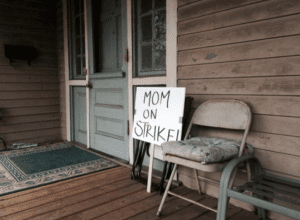
Photo by Jason M. Volack
I’m going on strike. I mean it. I’m done with hands-on mothering. Not because I dislike being a mom. I love being a mom but I loathe being a maid. Do this. Do that. Pick this up. Pick that up. I used to be “Mommy.” Now I’m “Hey, Lady with the Frying Pan–Can You Come Over Here and Take Care of This Mess. Oh, Then Make Me a Smoothie.” No, no, no. My kids are taking advantage of me–just as your children are taking advantage of you. So here’s a list of eight things I will no longer do for my kids. Take my advice or you’re on your own.
1. Reverse shirts and socks that are inside out in the laundry. Right behind Dengue Fever and Cicadas on my list of the world’s greatest ills. When I take my clothes off, I make certain everything remains right side in. Know why? Because folding laundry is bad enough without having any extra work. Since I am a Shirt Reversing Cyborg, sent here from the future to solve all laundry horrors, my kids have no idea that I’ve been reversing their shirts and pants for 4,384 consecutive days. Well, I’m done. If they don’t want to wear clothes inside out they can reverse it themselves. Take that little laundry makers!
2. Empty their lunch boxes. Making lunches is nearly as annoying as reversing the laundry. Actually, it’s worse because at least while folding laundry I can watch the Real Housewives of Wherever. Making lunch sucks. It sucks on the first day of school (when the lunch box is clean and new and still smells of Target), it sucks on the last day of school (when the lunch box is moldy and nasty and smells like a mutilated turkey). First you have to dig out the box from 321 pounds of book bag nonsense. Then you have to empty yesterday’s casualties of uneaten lunch refugee–half a slice of ham, two squished grapes, something that looks like Colonel Sanders’ beard. Then you have to pack it all over again, thereby guaranteeing a future of more sad remnants of lunches gone uneaten. Starting now, if my kids don’t come home and empty their lunch boxes, they’ll either A. Go hungry or B. Nibble on the beard thing.
3. Tell them what is weather appropriate. This one is simple. I am not in their bodies, and therefore cannot tell if they are cold or hot. If my kid doesn’t want to wear a jacket, so be it. There are lessons to be learned from both freezing and sweating your ass off. After that, without a word from me, they will know exactly what to wear.
4. Put their clothes in the hamper. I have almost an involuntary tic. When I enter my children’s rooms I subtly–without even knowing it–put their clothes in the laundry basket. The dirty items just keep coming like an assembly line that never turns off. There’s a 75 percent chance my kids could not identify their laundry baskets in a police lineup. But they will as soon as they run out of clean clothing
5. Tell them to brush their hair. I stopped brushing my daughter’s hair years ago. But the pestering on my part never ended. Inevitably her hair turns into a beehive due to lack of quality brushing, and it takes forever to comb it out. From now on if she decides not to take good care of her hair she will learn about what happens to girls who’s hair is permanently knotted. Hello Edward Scissor Hands. I’ll have to cut it off. That’ll show her.
6. Clear their dishes from the table. My kids think I’m Alice from Mel’s diner. I cook. They sit and eat. Then they retreat to their evening activities while I clear the table as the family waitress. That is ridiculous. If they can use a fork and a knife, they can clear the table. And if they don’t, I at least want 20 percent in tips.
7. Bring to school their ______ that was accidentally left at home. OK, people make mistakes and children are certainly entitled to make a few. But I feel like some sort of drug mule every time I schlep back to school to drop off a left violin or homework paper or fitness log or lunch box. Bottom line: If I tell you to pack an apple, and you forget to pack the apple, that’s on you, Junior.
8. What to wear for picture day. True story: My son had Picture Day a week ago. He came down in the morning wearing a Robert Griffith III Washington Redskins jersey we had picked up at Marshall’s for $9.99. I shrugged. Hey, if that’s how you’d like your fourth grade year to be preserved–forever and ever and ever–who am I to argue? I’ll laugh alongside your children when they start mocking you for it.
by admin | Mar 29, 2017 | Blog, Uncategorized
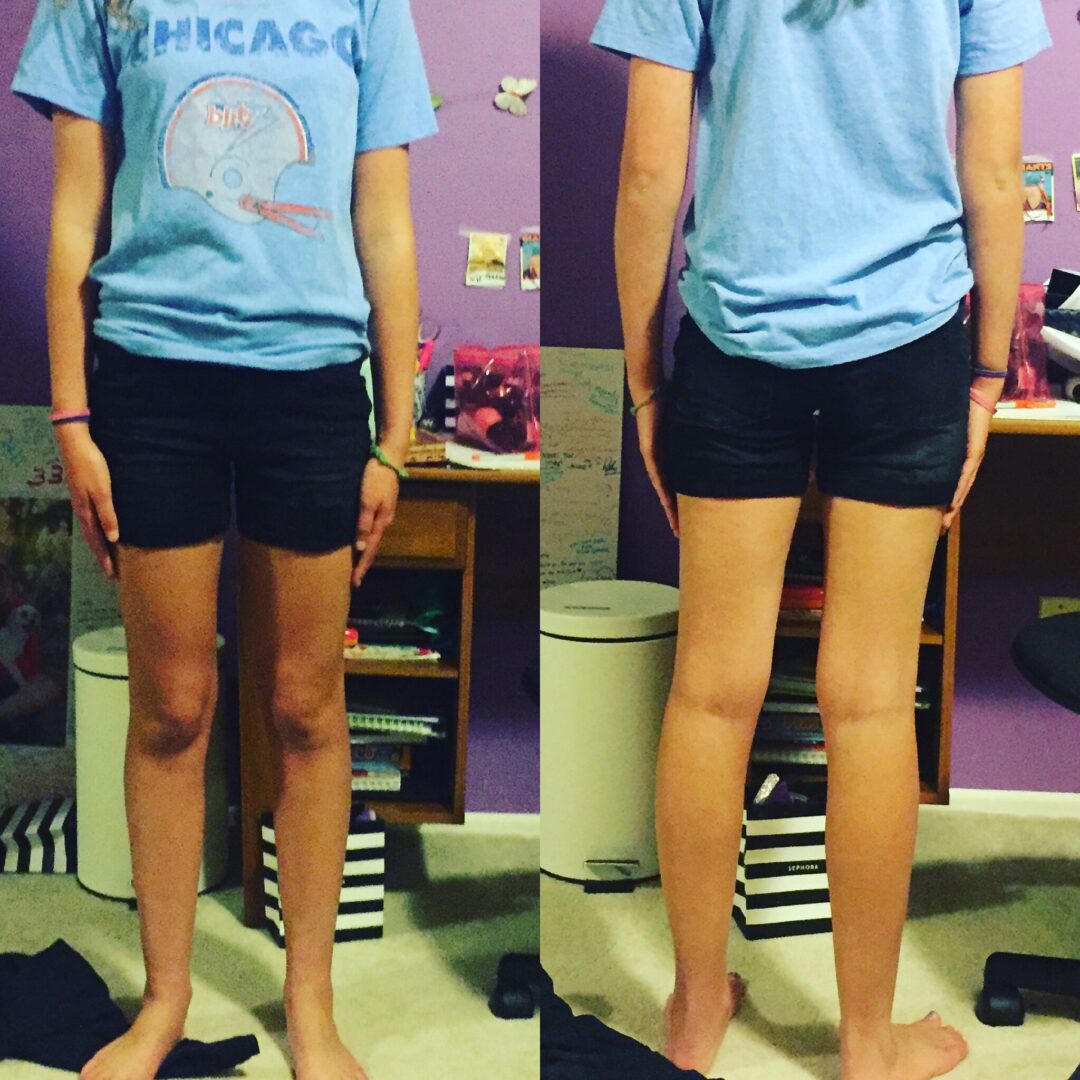
Dear Middle School Administrators:
Thank you for sending a note home for the second day in a row to say my daughter was dressed inappropriately for school. I’d like to offer an additional thank you for forcing her to change into large mesh shorts that have been worn by only god knows who and potentially never washed.
To reward you for treating my daughter with such concern, I am cordially inviting you to take my daughter shopping.
Here are the specifications you have to work with. I wish you loads of luck.
She is 5’7″ and 13 years old. Built more like her father, she has exceptionally long legs and arms.
She doesn’t like anything pink or purple or frilly.
She won’t wear pants because she gets overheated easily. Trust me I’ve seen this. It will cause a scene in the school yard.
She absolutely will not wear a dress either.
No item of clothing can have a logo visible because to her that’s not cool. She will however, wear any type of superhero, Green Day or USFL T-shirt if you can find them. You might be able to try for an occasional Beatles reference but that’s touch and go.
Now, don’t forget that you will have to find something in the stores that also meets with your dress code requirements. Here are the tricky areas that are most difficult to avoid. As per your policy she cannot wear tank tops. Shorts and skirts must not extend to the end of the fingertips (This is a toughie.)
So, if I were you (and I’m glad I’m not) I’d focus on the shorts first. She has very long fingers which seems to make finding shorts that won’t get her sent to the principal’s office impossible (On the bright side the piano teacher says those fingers are an asset.). I’d schedule a few afternoons and weekends for this endeavor. I can tell you from experience that just heading to the mall, Target and the outlets won’t cut it. Not much for her there. I’ve already checked.
One last point: please try to stay within a reasonable budget. We can’t spend a fortune on her wardrobe. She is still growing after all.
I thank you endlessly for taking on this chore. What a relief for me.
Sincerely,
Sick Of The Dress Code Mom
P.S. I forgot to thank you for making it clear to my daughter that her body is somehow a distraction, either to herself or to the boys. I thought she might have missed the message earlier in the year when the gym teacher told her she couldn’t wear yoga pants because the boys aren’t able to control themselves. I appreciate how hard you are working to drive the point home.
by admin | Mar 22, 2017 | Blog

* See photo note at end of post
Over the past few months I’ve gained a few pounds. Well, more like 15. And if I’m being honest, there was a 10-pound gain before that.
When I was pregnant with my first child I joyfully gained 40 pounds. I ate with reckless abandon because I felt like I had a good excuse. I thoroughly enjoyed myself. After a baby that weighed a mere 5 pounds popped out (clearly my weight wasn’t baby weight) I just went about my merry way. There would be no dieting. I was fully overwhelmed by the adjustment to being a mom while still trying to hold down a job. By the time my second child came into the world I had gained another 40 pounds. At 5-feet tall that was plenty. After a few months, I decided I needed to get my body back. I did Weight Watchers and came down to a healthy pre-pregnancy weight.
But keeping that weight off wasn’t easy. Like clockwork, every year between November and March I steadily gained. Now working full time as a professor, while also writing a twice-weekly column, performing my duties as a family coach and being a work-from-home mom, I feel like there is barely a space to insert a brief walk with the dog. Exercising and eating right isn’t so simple when you are hanging on by a thread.
I’ve never liked my body. No matter how skinny I was I hated my thighs. They always seemed to be out of proportion with the rest of me. I wished I had a little more of this and a little less of that. But something funny happened this last time I gained. I didn’t feel badly about my body.
My clothes are fitting snuggly, but when I look in the mirror I am happy with what I see.
I cannot do it all. Something has to give, and I won’t let it be my sanity.
I can’t always find the time to chop veggies and have them ready for a snack. I don’t always make the smartest food choices when eating out. And I really can’t make it to the gym 3-5 times in a week. I’ll certainly try. But if I can’t (and I usually don’t) I can at least be kind to myself. I’ll accept that I’m being pushed to my limits right now professionally and personally. I can love me the shape I’m in because I’m doing the best I can.
Right now, I look good to me. And that’s a first.
* Before taking this picture I thought about adding a little lipstick and doing my hair. But decided I should look like the real me.
by admin | Jan 23, 2017 | Blog
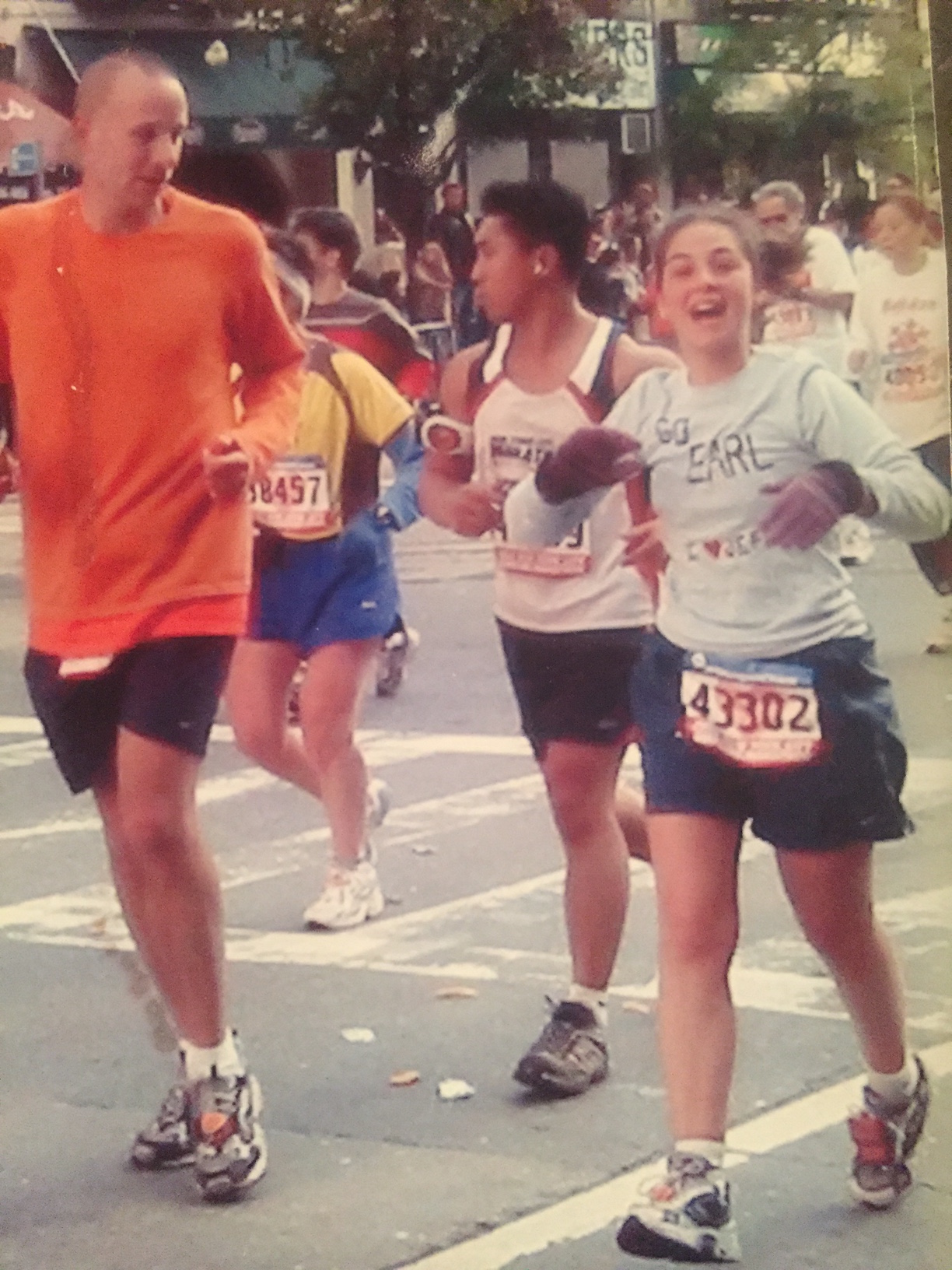
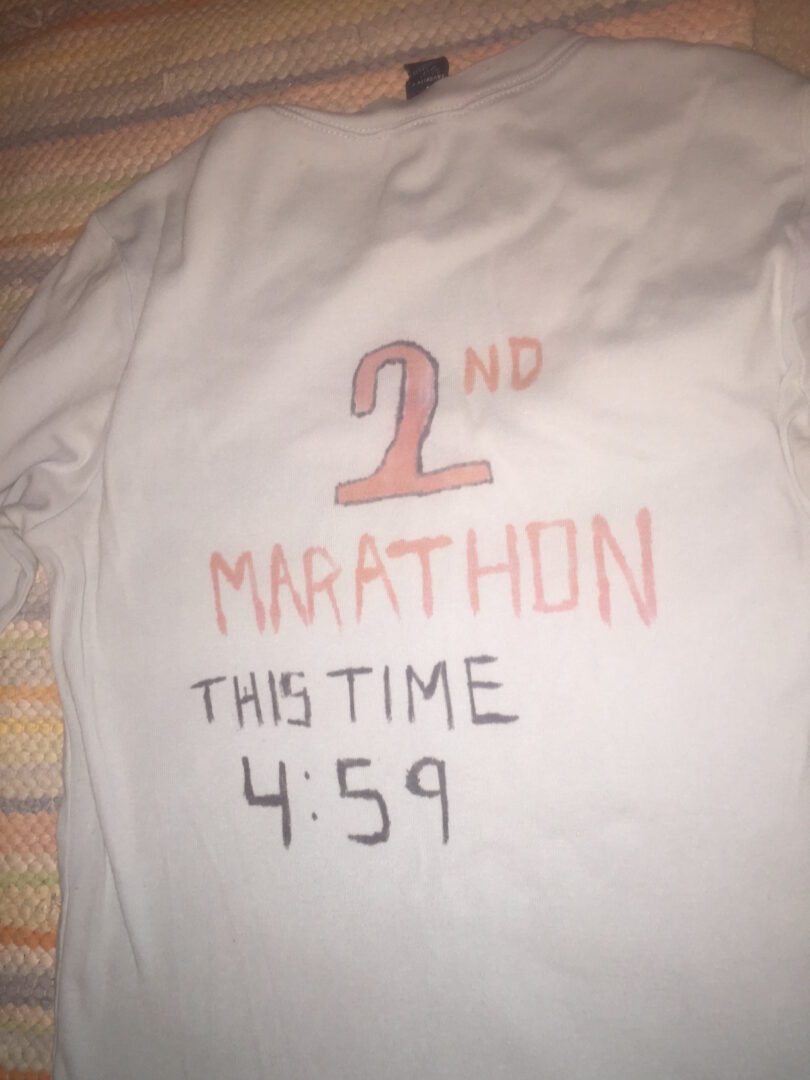
A few days ago my son, Emmett, lost his 23rd consecutive basketball game. That’s three years of being on a losing team. And yet, my son starts each game with the enthusiasm of someone who sees the bright side of life. An eternal optimist thinks there’s always next game, and that’s Emmett.
After the most recent slaughter (36 to 8) Emmett remarked aloud, “Well, we came in second place.” The coach overheard him and responded by saying, “That’s first loser.” I was a bit stunned.
I’ve taken a few days to absorb the coach’s comments. I’m trying to see it from all angles. But all I can come up with is that an adult coach told my 10-year old that he’s a loser. And if he is a loser for being part of this game well he must be a gargantuan loser for sacrificing 23 in a row. I’m sure the coach didn’t literally mean my son was a loser. And yet, he still couldn’t offer up anything more inspiring.
The coach is a volunteer, not a professional. He probably isn’t trained and is doing the best he can. I get that completely. I just feel totally bummed that youth sports focus more on winning and losing instead of learning and having fun. This isn’t the high school or college level. This is a league for 9 and 10-year olds.
Back in 2000 I ran the New York City marathon as my first. I had no expectation of beating anyone, and I hadn’t a clue what a reasonable time goal would be. I just wanted to finish. And I did in five hours and 14 minutes. It was a huge accomplishment. Two years later I decided to run it again. This time I thought it would be cool to break five hours. To keep the goal in my mind during the race I wrote 4:59 on the back of my running shirt.
The race was brutal. By the time I reached central park for the last few miles I was done. Practically delirious, I started to doubt if I would finish. I told my husband I needed to stop. He broke into an award-winning Rocky-style pep talk. Then a guy came out of nowhere to say that he had been following me for the entire race because he too wanted to get a 4:59. He said, “Don’t stop now. Let’s do this together.” He completely raised my spirits and inspired me to keep going.
My husband and I ran the last mile with the stranger and all crossed the finish line together. When I looked up at the clock it read 5:00:26. My husband glanced over to me prepared to console me for missing my goal by 27 seconds. But before he could say a word I said, “I did it.” I was elated. In my mind the 27 seconds didn’t count. After five hours of running without stopping, and shaving 14 minutes off of my time, I felt like I won even if the clock didn’t reflect it.
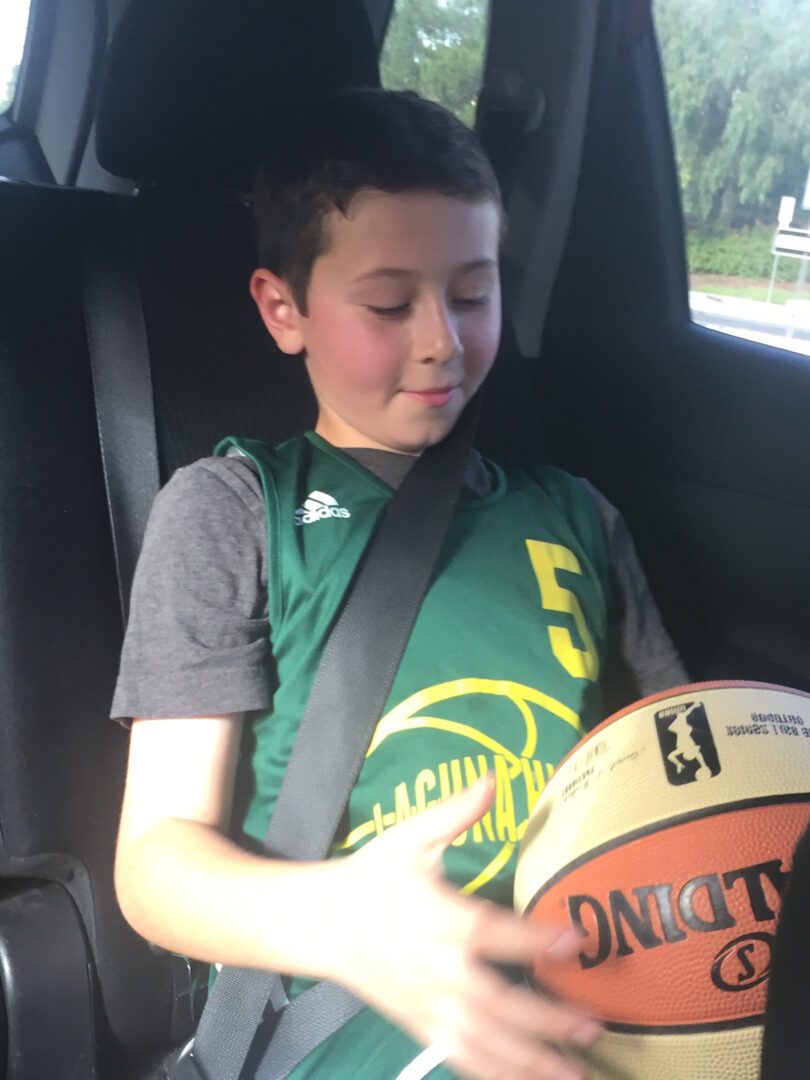
Post-game Smile
Sometimes there aren’t just winners and losers. There is so much more to sports than that. There is heart and character. Grit and hard work. Sportsmanship and growth. My son is a drastically better player after his 23rd loss than he was after the first. Seeing him guard a boy who was at least a foot taller with glee was everything at the game. Losing, who cared?
Emmett isn’t a killer competitor. He never will be. I don’t know if his lack of competitive nature will hurt him somehow. However, I do believe that his ability to be undeterred by losing, to see accomplishments in the face of obstacles and to be optimistic will help him on and off the court.
by admin | Jan 18, 2017 | Blog
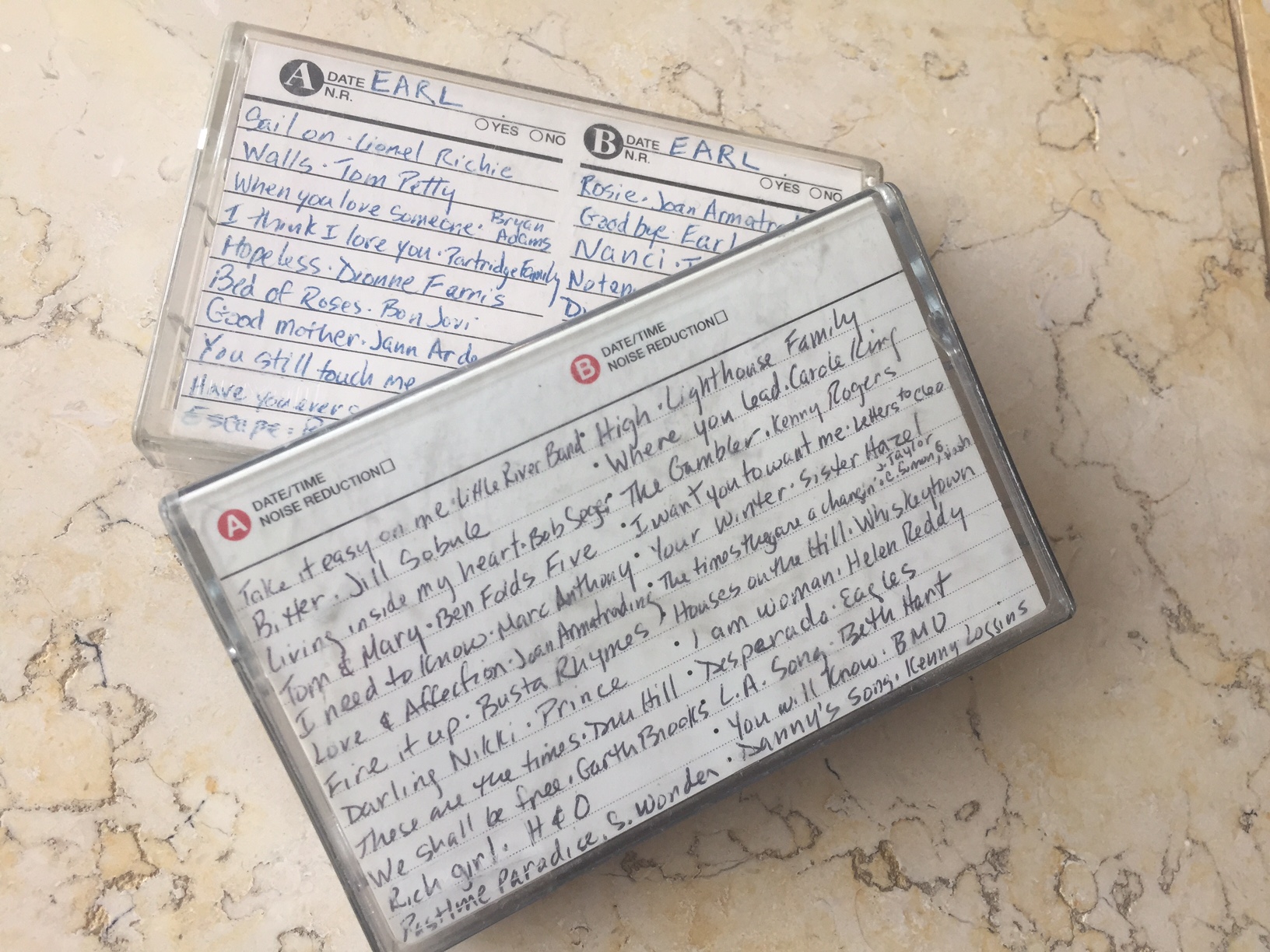
My first mixed tapes I made for Jeff.
I did a lot of dating in my 20s. A lot! Family and friends set me on blind dates. I met men at parties or weddings. My grandmother even gave my number out to a stranger on an airplane because the stranger had the sweetest grandson (actually he was living with his fiancé when he asked me out). I dated so much that at one point I proposed a blind date book based on what I learned.
My goal wasn’t to date as many people in the New York Tri-State area as I could. No, I wanted to get married and have a family. I wanted to be a career woman too. But that I could do on my own. My frustration over not finding the lid to my pot grew and grew as I watched my peers marry off. I had a few long-term relationships but the vast majority of those dates ended before or after the second date. There wasan issue with everyone. One guy too short. Another too hairy. One guy killed rats for a living for research (too creepy).
Some soul searching led me to the couch of a friend’s therapist to figure out why I couldn’t meet my mate. After about 8 sessions the therapist said the words that changed my life completely. He said, “Unless the guy is dangerous, go on a third date, with everyone.” Sigh.
Subsequently after my best friend Ellie’s wedding I was told that a guy at the wedding liked the look of me and wanted to take me out. He had good references just like all the guys before him. When it didn’t work out with the rat killer I gave the go ahead for Jeff to call.
The first call didn’t go well. Jeff trying to make conversation remarked, “Catherine, that’s not a Jewish name.” Yawn, heard that one all my life. Not a Jewish name, yet still Jewish. We arranged a first date at a local Mexican restaurant. It was raining and Jeff was late. But he ran in apologizing profusely. Forgiven. Jeff was wearing a faded black t-shirt under a black and orange-checkered vest with faux silk back. After dinner, Jeff walked me the six blocks back to my apartment making it clear he wasn’t going to come up. I laughed because no one invited him up. In the end I went home with a happy glow of possibility. When I whined about Jeff’s wardrobe Ellie said, “Don’t worry about it. You can change the clothes.”
Then came the second date a.k.a. the point at which I usually cut guys off. Jeff was supposed to plan the date. He came up with nothing. Annoyed I put together a plan for us to walk along the West Side Highway. Somehow we ended up spending a full day together but it wasn’t a good day. In fact it was a pretty crappy date. Jeff was argumentative and opinionated. And he had the worst hygiene. From the time he picked me up until the time he dropped me back at my apartment he had a hard hanging chad of a booger attached to the end of his nose. I couldn’t take my eyes off of it. And yet Jeff shockingly hadn’t noticed. Between the outfit and the booger I was becoming more despondent as the date progressed. Another date would end and I wouldn’t have found my partner, again.
When we reached my door I was ready to run but Jeff reached into his pocket and pulled out a mixed tape he made for me. I love music and loved making mixed tapes. I couldn’t believe Jeff thought to make this tape for me after only one date. Still I took the tape, said thanks, and went up to my apartment before the tears came. I knew I wasn’t going out with Jeff again. I didn’t care what the therapist said. Sure Jeff wasn’t dangerous but he was clearly not for me. The clothes. The booger. The obnoxious conversation. Mixed tape or no tape, there wouldn’t be a third date. I sobbed.
Despite my mood I put the tape in and started listening. With each song I cried a little less and laughed a bit more. Jeff was recklessly unafraid to put himself out there. By the time I hit Patti LaBelle’s Lady Marmalade I started to reconsider what the therapist told me. He said I was afraid a relationship wouldn’t work out so I preempted the end by not giving the guys a chance. I knew he was right. Although I wasn’t certain the guy with a giant crusty booger was the one.
Go on a third date.
Go on a third date.
Go on a third date.
So I did. And it was the third date that did me in forever. Jeff met me for bowling with gifts he picked up at the dollar store that day. The gifts were small and silly. He wasn’t winning me over with a dozen roses or a fancy restaurant. He was just showing me that he was thinking about me and that he was kindhearted (and he can’t resist a dollar store, although I didn’t know that at the time). We gave each other bowling names, Big Earl and Little Earl. We had a great night. And the rest is history.
It was five words that allowed me to get out of my own way. Five words pushed me to give Jeff another chance. Five words to overlook the stupid items on my checklist that didn’t matter. Now after 15 years of marriage I am beyond grateful to that therapist (whose name I don’t even remember). Those five words forced me to focus on the person in front of me. Jeff showed me from day one the kind of man he is, and all I needed to do was pay attention.
Jeff is one of the most thoughtful human beings on the planet. He would give the shirt off his back as well as his shoes and pants if someone needed them more. He loves his kids and works around their schedule instead of the other way around. I am more loved and cared for than I ever hoped would be possible. I am the luckiest girl, and it was five words that made it all possible.
I found my lid. And he’s perfect (well except for the clothes. On this, Ellie was wrong. You can’t always change the clothes.)
Happy Anniversary Earl.

by admin | Jan 17, 2017 | Blog, Toy Reviews
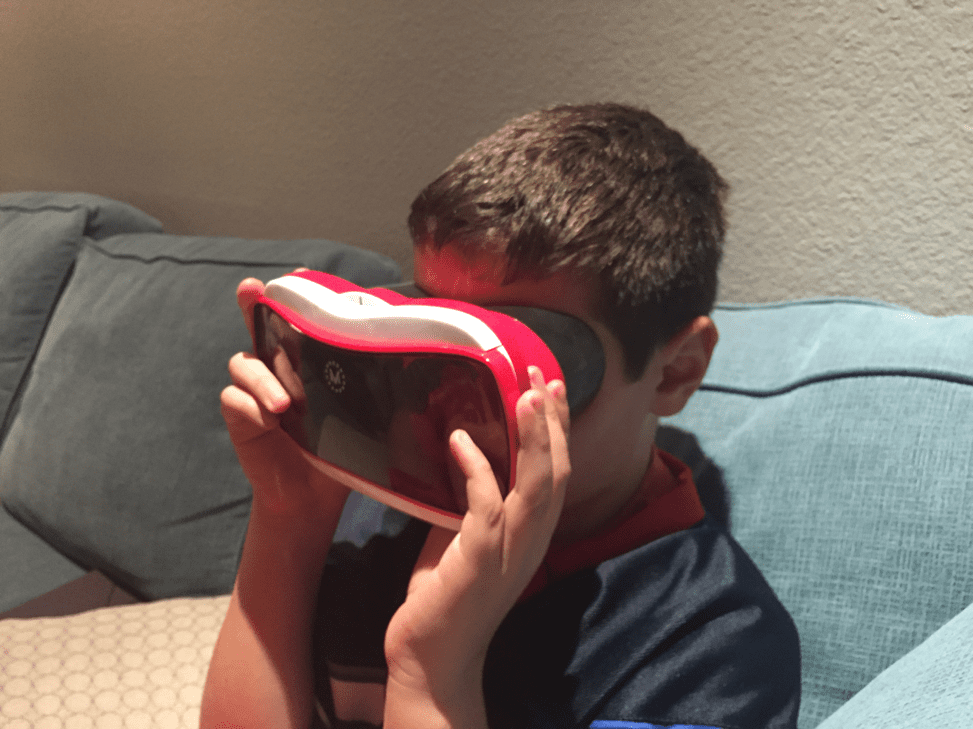
View Master Virtual Reality Starter Pack $17
View Master Experience National Geographic Dinosaurs $14.99
Review by Emmett Pearlman, 10 years old
The View Master is a virtual reality phone holder. It doesn’t come with a screen. You need a phone to use it. You also need to download an app to use the View Master. There is a lever on the side of the VR set. When you push the lever it’s like tapping the screen. That’s how you operate the games.
Once you have the View Master you can also buy a lot of National Geographic apps on phone and use it on the view finder. My favorite game is the National Geographic Dinosaurs. In the Dinosaurs game there are a variety of different dinosaurs to interact with. There are also two different modes to play in. Kidscan play inencounter mode which brings themto a 3-D scene with dinosaurs. Kidswatch the dinosaurs and see what they do, what they look like and the area that they live in. The dinosaur interacts with the viewer. He may try biting you (only pretend bite). The Brachiosaurus comes really close to the viewer on the screen. It is very colorful too. There is a stampede of Stegosaurs that run by you. The Spinasaurus swims by and tries to nibble at you. It’s cool to see what the dinosaur does to you and very cool to see their habitats. You can switch the dinosaur’s skin that you can unlock in adventure mode.

View-Master Experience Pack, National Geographic Dinosaurs
In adventure mode you go through a series of levels with the dinosaur that you choose. In the levels you hatch more dinosaurs and defeat others. Each level becomes more difficult as you move on. In some levels you unlock the skins that can be used in encounter mode. Adventure mode is fun because it isn’t easy.
In the National Geographic Dinosaur game kids can learn what the dinosaurs might look like, where they lived and the names. Kids from 7-years old to 13 might be interested in this game.
These games are educational because it puts you in experiences that you wouldn’t think of. It tells you what it would really be like to be in that environment. The worlds look realistic.
There are other virtual reality games that can be used with the View Master. I would recommend the View Master and National Geographic Experience Packs to friends.
**Disclosure: As part of the National Geographic Insider Program I was provided with the items in this post to review. All opinions are my own and my son’s.
by admin | Jan 11, 2017 | Blog

For my birthday this year my wonderful mother-in-law gave me a generous gift card to Anthropologie. I love that store, and I was thrilled to pick up something fun.
A few days ago, I headed to the Irvine Spectrum with my daughter. She was busy shopping elsewhere when I tried on a T-shirt and pair of pants at Anthropologie. Both were insanely soft and comfortable. I rushed out of the dressing room on the line to pay. I was incredibly excited and satisfied with my purchases.
Most days I sit around at home working on my computer. I want to be comfortable. Typically, I wear my pajamas until I have to shower to get the kids. I try not to embarrass my kids at school pick up by showing up in my pajamas. At the same time I also don’t want to get super spiffy just to come back home again. So, my new pants and shirt were going to be just perfect. Stylish yet comfortable.
After shopping I showed my husband what I bought. He wasn’t enthusiastic. I didn’t care. My pants were comfy and cool because I bought them at Anthropologie. Everything is cool there, right (asks the women who has never been cool)? I put on the pants with a nice sweater the very next day. I had a few errands to run before going to a neighbor’s house for an hour-long salad party. The party involvedabout 20 women bringing in a few salad ingredients and everyone shared to make salads in jars for the week. Brilliant idea.
Anyway, I was trying to accomplish way too much before the party so I rushed into my house to get my ingredients and then ran to my neighbor’s house. When I walked in my neighbor said, “Oh, thanks so much for coming. You are awesome. You came even in your pajamas!” Um, What? Yup, my neighbor thought my pants werepajamas. Whatever! I laughed inside because I knew my husband would love this story. I made my salad and that was that.
A few days later I told my friend the story about my new pants and how my neighbor thought they were pajamas. Ha ha, funny funny. So, the friend asked for me to send her a picture of the pants. I went tothe Anthropologie website and found the pants and texted them to my friend. Shetexted back, “They’re cute! And comfy! You should wear them with pride.” I thought, “Yeah! I will!” But then I realized the picture of the pants I had texted featureda stripe running down the side–and my pants did not. Before long,a little teensy tiny thought started to formulate in my head. Maybe my new beloved pants are pajamas. Oh, crap!
Just to make sure, I decided to have a gander at the sleepwear section. And right there were my pants. Except they weren’tpants. They were Sonadora Sleep Pants.
And there you have it. I couldn’t not be less cool.
Thanks for nothing, Anthropologie.

Berlin Joggers on the left. Sonadora Sleep Pants on the right.

Berlin Joggers on the left. Sonadora Sleep Pants on the right.
Side Note: You tell me if you think the Sonadora Sleep pants look so drastically different from the Berlin Joggers.
by admin | Dec 19, 2016 | Blog

This morning I drove my 13-year-old daughter, Casey, to school just like always. It’s typically a rush from the moment we wake at 6:30am to the moment we head out the door at 7:00. I am not a morning person. So to avoid barking orders I generally take a more relaxed approach in the mornings. But recently I’ve taken a step back for another reason.
In four more years my daughter will head off to college. Just four years. That’s no time at all. If I want to prepare her to live independently with any chance of success I can’t wait until she is a junior in high school to start to allow her to make decisions for herself. I need to begin now when she can learn while still surrounded by our safety net.
To that end I have stopped telling my daughter how to dress or what to do with her hair. I don’t tell her how (or even where) to complete her homework. And I allow Casey to keep her room like a crime scene. If she can’t find something, it’s her problem. Casey does her own laundry, for the most part. She can vacuum and mop and empty the dishwasher. To my great delight she woke up before her parents on Sunday and made pancakes.
So this morning I was still feeling pretty good about the level of independence we are fostering in our house. Well, that is until my daughter took one step out of the car at school.
For first period Casey has gym. Since she has to change her shoes when she gets to school she usually walks barefoot to the locker room. Since we moved to California Casey hasn’t worn pants and she barely wear shoes other than flip flops. I’m freezing all the time but she isn’t. I figure if she gets cold she will put on more clothes. Today she got out of the car and I heard a teacher say, “Casey, you know it’s 38 degrees out, right?” I doubt Casey knew it was that cold but she wouldn’t have cared if she did know. She doesn’t get cold and her laziness about putting shoes on outweighs the discomfort of her feet becoming chilly.
However, at that moment I felt shame. I felt like I wasn’t doing my parenting job. What kind of parent allows their kid to go to school in a t-shirt, shorts and no shoes when it’s near freezing outside? I drove away embarrassed. My first thought was to make Casey put her shoes on before leaving the house from now on.
But as I drove away I realized this teacher isn’t going off to college with Casey. He has no responsibility for her future. There are tons of people who wouldn’t approve of some of our parenting decisions. I don’t care. They don’t have to live with my kids, and they don’t have to ensure their ability to work and live independently in the world.
When anyone doles out parenting advice (myself included) parents need to filter it through their philosophy. Our philosophy is to allow the kids to make reasonable decisions and learn from the natural consequences. Following that philosophy means an occasional bad grade for missing homework. It means losing a cherished item in the sea of a messy room. And it means letting the kids get cold or embarrassed or feel some small degree of pain to learn lessons on their own. Some days that is easier to do than others.
***On a side note, my car is clearly a California car. An alarm sounded as awarning as I drove away to tell me it was cold outside. Maybe the car was trying to teach me a lesson!
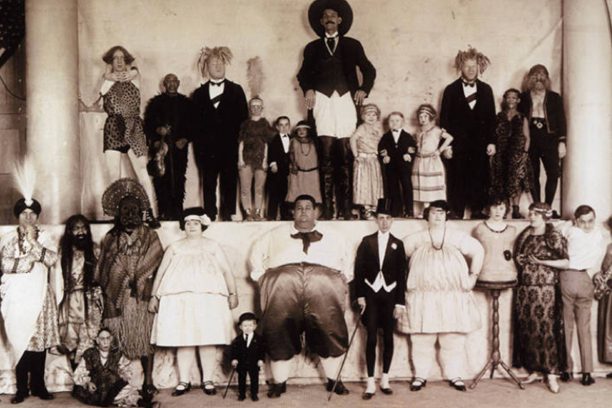
by admin | Nov 21, 2016 | Blog
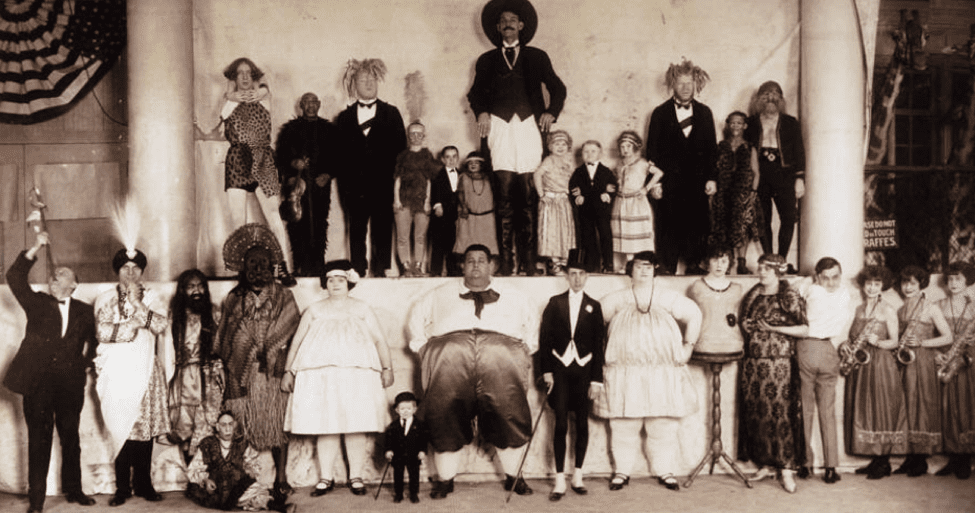
Ringling Bros. “Congress of Freaks” circa 1924. Wikimedia Commons
Recently I watched an old fashioned freak show. No, I didn’t visit the circus or the state fair. I saw the show from the comfort of the couch in my family room. It isn’t currently tasteful or politically correct to call someone a freak. Yet, under a different name the same type of show continues. Parading people who exhibit psychiatric issues for the purpose of entertainment is commonplace on every major television network. The worst part is often a medical or mental health professional is the P.T. Barnum.
A prime example of this phenomenon occurred on November 18 when Dr. Phil McGraw welcomed actress Shelley Duvall as a guest on his Dr. Phil television show. Dr. Phil has a Ph.D. in clinical psychology but he does not have a license to practice in any state. This particular show consisted of an interview with Ms. Duvall and a clinically inappropriate attempt to provide treatment. During the interview Ms. Duvall states people in security or at the bank are trying to hurt her. She reports some unknown man is threatening to hang up upside down in his classroom. She believes people are listening in on her conversations and the internet has compromised the government and defense department. Lastly, she routinely remarks about objects implanted in her body.
To any trained mental health professional, Ms. Duvall is in the midst of a potentially serious psychotic episode. Dr. Phil clearly recognizes her symptomology because he takes the time to demonstrate to his audience aspects of her illness.
During the course of the show Dr. Phil repeatedly tries to obtain Ms. Duvall’s consent for treatment. However, Ms. Duvall does not have the capacity to make rational decisions due to her inability to understand information that is presented to her. People in Ms. Duvall’s state cannot choose or refuse treatment and require either another individual or a court to make decisions for them. Dr. Phil must have studied consent in his training yet he continually tries for the sake of the cameras to have Ms. Duvall agree to treatment.
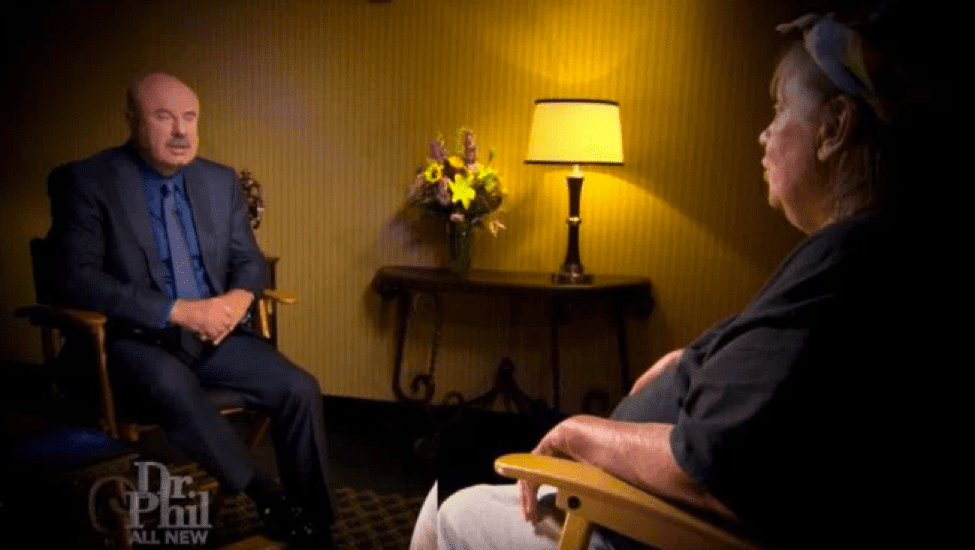
The show takes Ms. Duvall on a wild goose chase from Texas to California for treatment with the cameras following. Shocking to probably no working mental health professional, Ms. Duvall does not do well on the trip. Once in California Dr. Phil reports that after three days at a treatment facility Ms. Duvall refused to sign paperwork to accept treatment or take any medications. The show closed with Dr. Phil reporting that Ms. Duvall is being seen by professionals closer to her home.
The line between entertainment and what appears to be counseling, medical advice or treatment is blurry to the average consumer. Television personalities that use the prefix “Dr.” represent themselves as helping professionals. Their shows appear to provide assistance to people with significant emotional and psychiatric problems. However, just like in a circus these shows exploit vulnerable people for the benefit to the TV personality, show and network.
Doctors and mental health professionals are taught to use codes of ethics as guides to protect patients from abuse based on an inherent power differential. Generally, when a licensed professional acts against the prescribed code of ethics, there are ramifications up to and including revoking the license required to practice.
But what happens when a person who earned a degree in mental health but is not licensed in that profession crosses an ethical line? Well, absolutely nothing.
The exploitive nature of the relationship between Ms. Duvall and the show is crystal clear. She is a highly vulnerable person in need of real medical and psychiatric treatment. Ethical principles such as do no harm, obtain informed consent and avoid exploitive relationships are without a doubt breached. Yet, the unlicensed Dr. Phil is merely providing entertainment so he is not bound by the same regulations. Exhibiting Ms. Duvall, with all of her obvious psychiatric issues, on television is an atrocious abuse of power, one that would be easily sanctioned by a professional ethical review board.
However, one need not be bound by a professional code of ethics to act ethically and morally. It is unacceptable for high-powered highly-influential television networks and personalities to continually abuse vulnerable people for the sake of entertainment. Sure, people should know that television shows simply provide information and entertainment and the material presented should in no way be conceived as clinical advice. But no matter how many times that sentiment is conveyed people continually line up to be helped by these famous professionals.
It is wrong to profit in any way off of someone’s misfortune. It is downright vile to do so while simultaneously publicly humiliating and potential worsening that person’s health crisis.
The lack of outrage from the public about shows like Dr. Phil, Celebrity Rehab with Dr. Drew and even Dr. Oz who peddles assorted products is deafening. Sure there may be a holler from time to time in relation to a particularly egregious show or when someone dies after an appearance. However, in rapid succession, business returns to usual. Eventually viewers become rabid for the next freak in line. And just like always, another vulnerable person is signs up for the show.
As a society, we can and should do better. Let’s not call the freak show by a more tolerable name. Let’s end the show once and for all by tuning out.
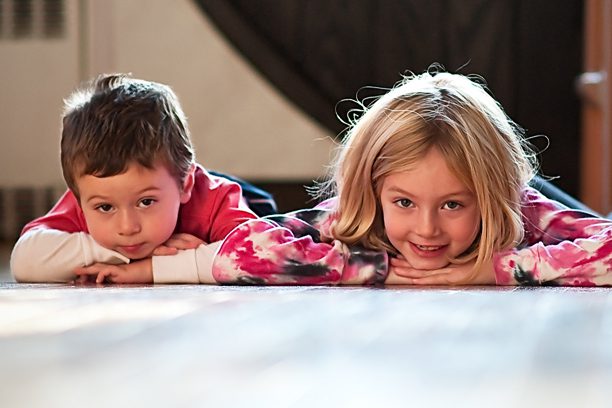
by admin | Nov 9, 2016 | Blog
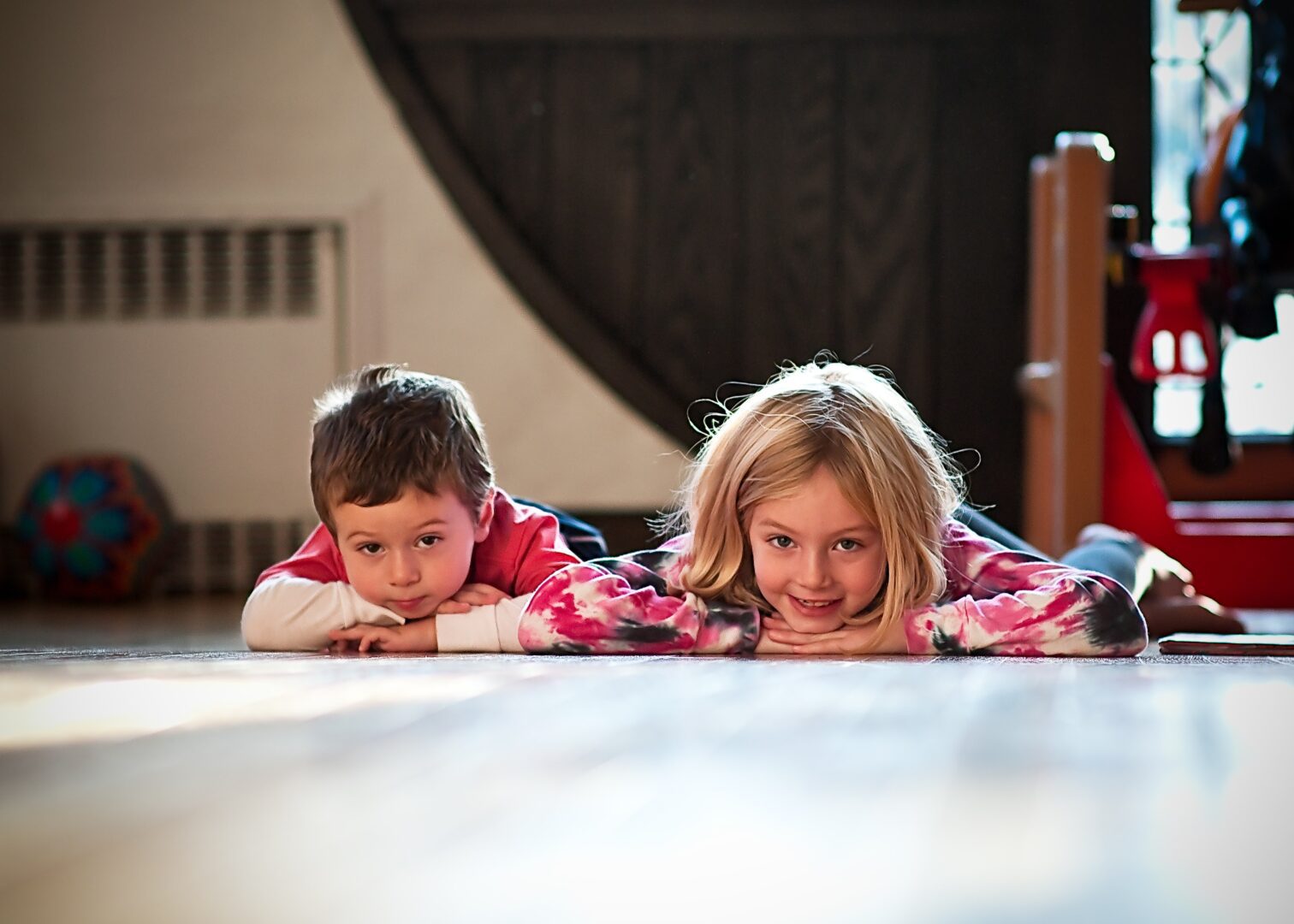
Tall Paul Photo
I cried myself to sleep last night. I cried for the people who have pre-existing chronic conditions. I cried for the Muslims. I cried for the people living with disabilities who just saw their most powerful bully get elected to the presidency. And I cried for all the women who were hoping the glass ceiling could be broken once and for all. However, of all the thoughts that swirled through my brain, here is what weighed the heaviest: How would I look my kids in the eyes and tell them about the election results? How would I deal with my own devastation to help them understand what I don’t fully understand?
Throughout the past few months my husband and I thought it was important to bring our children, ages 13 and 10, into the fray of the election. We watched the debates. We listened to the various soundbites and processed them over dinner. In the days leading up to the election my daughter watched me prepare my election-day pantsuit in honor of Hillary Clinton. I baked a victory cake, and we invited a handful of friends over to watch the election. This was going to be a big moment and our kids were coming along for the ride.
But it didn’t go as planned.
In all the excitement I forgot to prepare my children for an eventuality that I didn’t think was possible. And now, millions of parents are facing the stinging disappointment staring back at them in their children’s faces. It’s devastating.
But we can’t sit in the corner and cry over what happened. Life isn’t over, especially for our sons and daughters. Children have no historical reference for this election. When mine return from school today, I am going to tell them that, no, we are not doomed. There have been other times of great conflict and hate in this country. Slavery, internment and segregation are terrible atrocities that happened on American soil. And yet, when people came together, good eventually prevailed. The work of a democracy is never done. Many in our country don’t have equal rights and they experience prejudices on a daily basis. Millions of children still don’t have enough to eat or weather-appropriate clothes for school. Women still aren’t given the same opportunities as men. So we, the people of this democracy, will need to vote, protest, stand up for the vulnerable; will need to educate and reach across aisles of all kinds to address this nation’s issues. Strong and principled people did this in past times of darkness, and we can do it, too.
I’ll tell my children how government works, but in terms they can understand. One man cannot singlehandedly rule America. There are checks and balances. Laws are fluid and can be changed. People who are elected can be taken out of power through a well-defined process, if need be.
I will help my kids find their own voices and words for their feelings. I won’t leave them alone to process this on the schoolyard just because I am personally bereft. I will teach them how to use their voices to make change. I will show them examples of lawyers, doctors, teachers, social workers and politicians who dedicated their lives for the betterment of our country.
I will not be able to deal with the fallout of this election with one conversation with my children. They will need more and so, truly, will I. In the coming weeks and months (and maybe even years) I will continue to read books, watch documentaries, visit important museums and landmarks, and do what is in my power to do to keep the conversation going in our house and elsewhere. I will use my children as my boomerang to bring me back to a place of hope for the future.
And we will find a way, collectively, to move ahead.



















